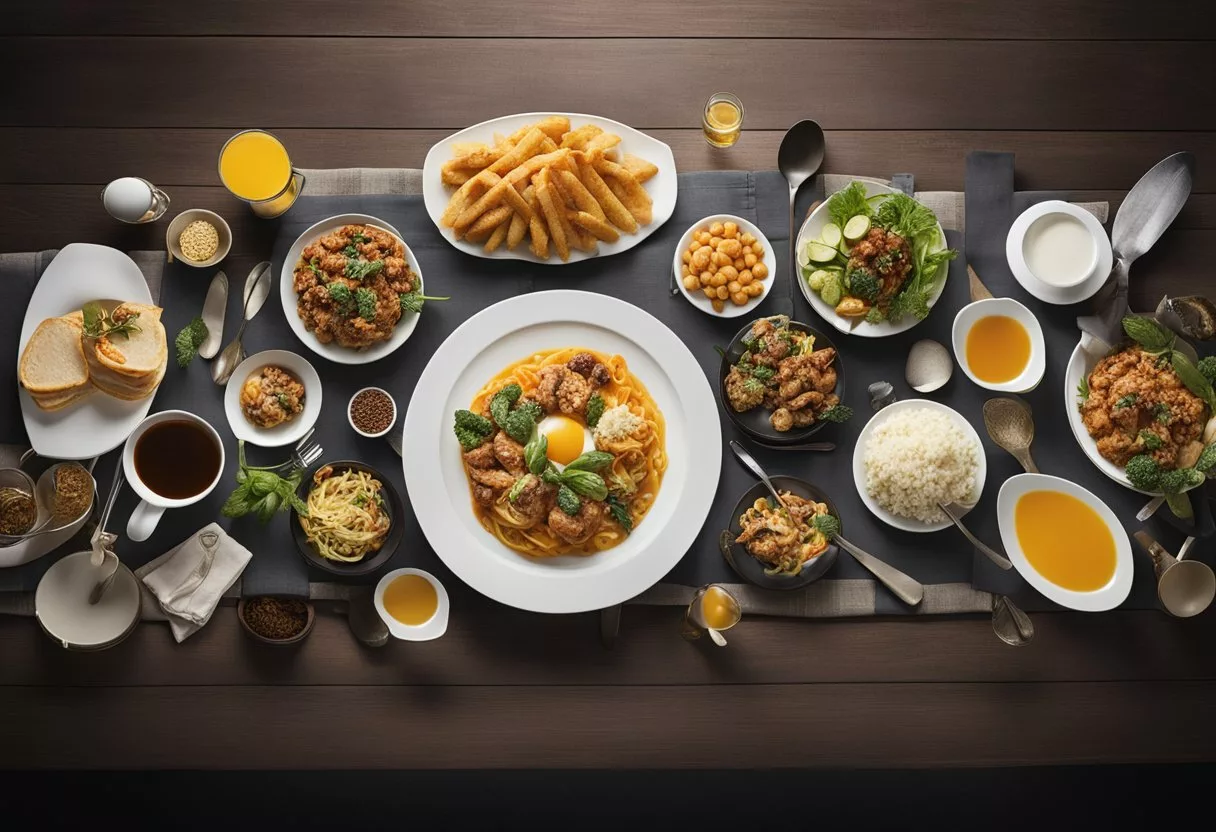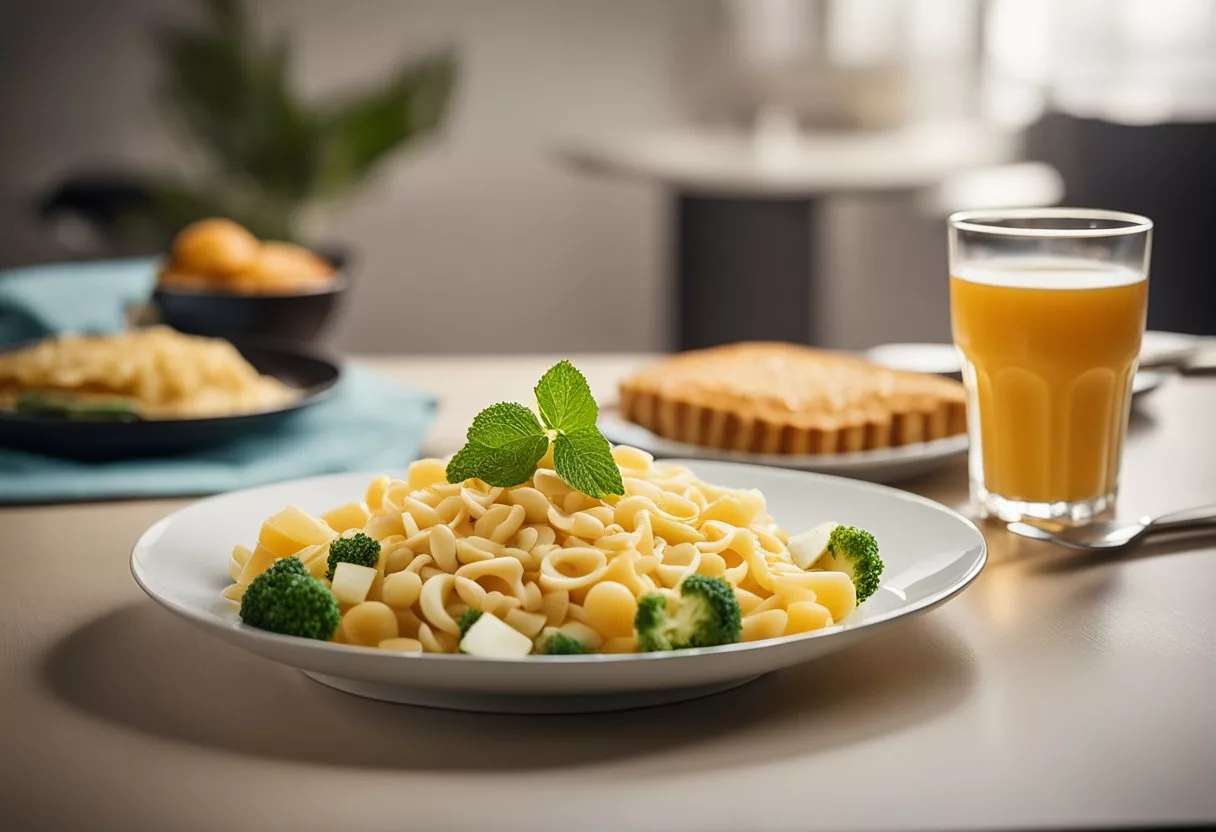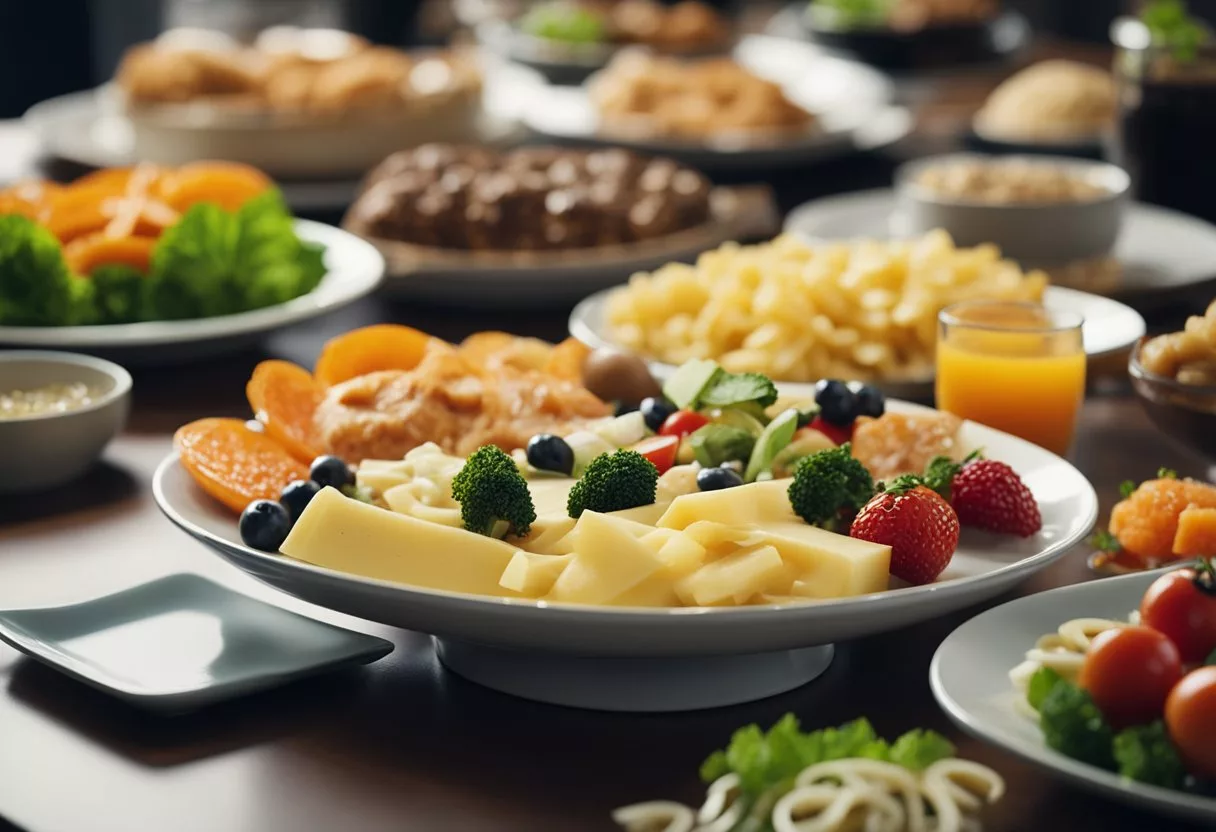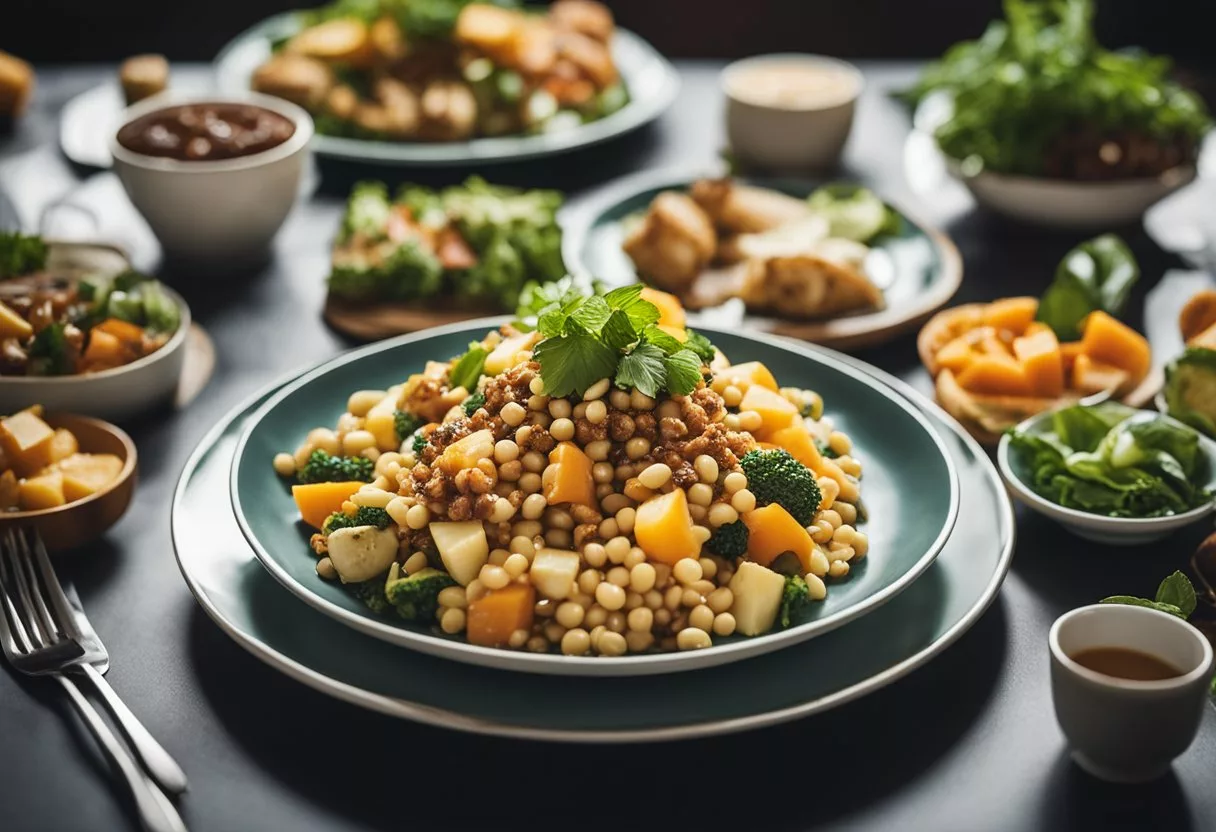Portion distortion happens when our view of what a “normal” portion size is becomes skewed by the large servings often seen in restaurants and packaged foods. This shift can make it easy to overeat without even realizing it. When our plates are loaded with more food than ever before, we tend to eat more than we need, leading to potential health issues.

Over the past 20 years, portion sizes have grown so much that what was once considered a large meal is now seen as a standard serving. This change has also impacted what people believe to be appropriate portions at home. Larger portions often mean more calories, which can contribute to weight gain and other health problems. To learn more about how servings have changed, check the NHLBI’s portion quiz.
Recognizing and addressing portion distortion is key to maintaining a healthy diet. By understanding how portion sizes affect our eating habits, and implementing strategies to control portions, it’s possible to avoid the pitfalls of oversized servings. Simple tactics, like measuring with your hands, can make a big difference. For more tips on controlling portions, visit MedStar Health’s guide.
Key Takeaways
- Portion distortion leads to eating more than we need.
- Large servings are now viewed as normal, contributing to overeating.
- Simple strategies can help control portion sizes effectively.
The Concept of Portion Distortion

Portion distortion is the gradual increase in food portion sizes over time, affecting how much people eat and perceive as normal. Larger portions have become common in both restaurants and at home, leading to higher calorie consumption.
Historical Context
Portion sizes have significantly changed since the 1980s. Meals and snacks are now much larger compared to what they used to be. This shift can be seen in various foods, such as a serving of soda, which was once 6.5 ounces and is now commonly 12 ounces or more. Fast food establishments and restaurants have also contributed by offering larger meal options to attract customers.
Furthermore, packaging changes in grocery stores reflect this trend, with single-serving items often containing more than one recommended serving size. This shift has made it difficult for people to judge appropriate portion sizes, contributing to overeating and increased calorie intake.
Impact on Eating Habits
The increase in portion sizes has altered people’s eating habits significantly. Many now consume more calories than needed, leading to higher rates of obesity and related health issues. Larger portions can make it challenging to maintain a healthy diet, as people often feel compelled to finish what’s served.
Moreover, portion distortion affects children’s eating habits. Kids growing up with larger servings may develop a skewed perception of what constitutes a normal portion, leading to lifelong challenges in managing food intake.
Understanding the proper serving sizes is crucial to combat this issue. For example, using smaller plates can help control food portions and reduce the risk of overeating. Education on visual cues, like comparing a serving of meat to a deck of cards, can also aid in healthier eating practices.
Health Implications

Portion distortion can lead to several health problems by encouraging people to eat more than necessary. This section details the effects on weight and obesity and the connection to chronic diseases like heart disease and type 2 diabetes.
Weight and Obesity
Eating larger portions than needed can lead to weight gain and obesity. When people consume more calories than their bodies use, the extra calories are stored as fat, increasing body weight.
Over time, consistently large portions contribute to overweight and obesity. Obesity is a significant risk factor for numerous health issues. People who are obese are more likely to develop heart disease and type 2 diabetes.
Managing portion sizes is essential to prevent these outcomes. Awareness of portion sizes and choosing smaller servings can help in maintaining a healthy weight.
Chronic Diseases
Large portions can increase the risk of chronic diseases. Consuming excessive calories and nutrients like fats and sugars can raise cholesterol levels, posing a threat to heart health.
Heart disease is one of the leading causes of death globally. Elevated cholesterol from overeating can clog arteries, leading to heart disease.
In addition, overeating can cause insulin resistance, a precursor to type 2 diabetes. Insulin resistance makes it harder to control blood sugar levels, increasing the chance of developing type 2 diabetes.
To reduce risks, it’s important to monitor portion sizes and maintain a balanced diet. Eating appropriate portions helps manage body weight and lower the risk of chronic diseases.
Understanding Food Portions

Understanding food portions helps in maintaining a balanced diet and avoiding overeating. Knowing the nutritional value of foods, how to read food labels, and using visual cues are key to effective portion control.
Nutritional Value of Food
Nutritional value refers to the number of nutrients in food, including calories, protein, carbohydrates, and vitamins. Foods are divided into groups such as fruits, vegetables, grains, proteins, and dairy. Each food group contributes different nutrients essential for the body’s needs. Registered dietitians recommend paying attention to these values to balance daily intake.
Eating recommended serving sizes aids in getting the right amount of nutrients without excess calories. For example, one serving of bread is typically one slice, and one serving of meat is about three ounces.
Label Reading and Portion Awareness
Reading food labels is important for understanding portion sizes. Labels provide nutrition information such as total calories, serving size, and nutrient content. Many products contain multiple servings per container, which can be misleading.
Pay attention to the serving size listed on the label and measure portions accordingly. If a package states it contains two servings and you eat the whole package, you consume double the calories and nutrients listed. This helps in better portion control and nutrient management.
Visual Cues and Aids
Visual cues and aids can be helpful for managing portions. Tools like smaller plates, bowls, and measuring cups can prevent overeating. A simple method is to use your hand to estimate portion sizes: a fist for vegetables, a cupped hand for grains, and the palm for proteins.
Visual aids like the MyPlate diagram also guide appropriate serving sizes from each food group. Dividing the plate into sections for protein, grains, and vegetables encourages balanced meals. These cues make it easier to control portion sizes and ensure a mix of different nutrients.
Using these strategies, anyone can manage portion sizes effectively, leading to better dietary habits and overall health.
Cultural and Environmental Influences

Portion distortion is influenced by cultural norms and the surrounding environment. These factors play a significant role in shaping our eating habits and perceptions of appropriate portion sizes.
The Role of the Food Industry
The food industry has a major impact on portion sizes. Fast-food restaurants often promote larger portions through supersizing options and free refills. These offerings encourage consumers to eat more than necessary.
Fast-food meals have grown significantly over the years. Portions are often much larger than what is considered a healthy serving. This change can be seen in items like soft drinks, fries, and burgers. The trend for bigger portions extends beyond fast food, affecting restaurant and home-cooked meals.
The psychology behind marketing strategies also plays a role. Eye-catching promotions and larger package sizes at grocery stores can influence buying decisions. The goal is to increase consumption, often leading to overeating.
Social and Behavioral Factors
Social norms strongly influence portion sizes. People often mirror the eating habits of their friends and family. In many cultures, large portions are seen as a sign of hospitality and care. This cultural norm can lead to overeating during social gatherings.
Behavioral factors also come into play. Busy lifestyles make meal planning challenging. Many people opt for convenience, choosing ready-made or fast food options. These meals tend to have larger portions compared to home-cooked meals.
Additionally, frequent dining out contributes to portion distortion. Restaurant servings are usually larger than what is needed, pushing people to eat more. Over time, these habits can set an expectation for bigger portions in everyday meals.
External environmental factors, such as the layout of food displays in stores and portion sizes shown in powerpoint presentations on nutrition, also affect our perception of what is a normal portion. This widespread influence makes it challenging to maintain healthy eating habits.
Practical Portion Control Strategies
Practical portion control strategies can help manage energy intake and promote better satiety during meals. These strategies include being mindful while eating and making adjustments both at home and when dining out.
Eating Mindfully
Eating mindfully means paying full attention to the eating experience. This can help recognize internal fullness cues, which can prevent overeating.
- Take your time: Eating slowly allows the brain to register fullness. Aim to spend at least 20 minutes on a meal.
- Avoid distractions: Turn off screens and focus on your food. This enhances awareness of taste and satisfaction.
- Listen to your body: Pay attention to hunger and fullness signals. Eat when hungry and stop when comfortably full.
Adapting Home and Dining Out
Making adjustments to how food is served both at home and in restaurants can aid in controlling portions effectively.
- Use smaller plates: Research shows that smaller plates can make portions appear larger, which helps with satiety. A smaller plate can lead to a decrease in overall energy intake.
- Pre-portion snacks: Instead of eating directly from a package, divide snacks into single-serving portions to avoid overeating.
- Order wisely: When dining out, consider ordering smaller portions or share large dishes with others. Ask for a to-go box before the meal to set aside half for later.
- Plan meals: Plan meals ahead of time to regulate portions and ensure balanced nutrition. Prioritize incorporating vegetables and lean proteins.
- Measure with hands: A practical approach is to use hand portions. For example, a serving of protein could be the size of your palm, while a serving of vegetables could be the size of your fist.
These strategies can support a balanced energy intake and contribute to better health outcomes. Reducing portion sizes helps with managing energy expenditure and maintaining a healthy weight.
Nutrients, Foods, and Portion Sizes

Knowing the nutrients in foods and understanding portion sizes helps maintain a balanced diet. Here is a detailed look at portions for proteins, legumes, fruits, vegetables, grains, and carbohydrates.
Proteins and Legumes
Protein is essential for muscle repair and growth. Common sources include meat, chicken, beans, and legumes.
- Meat: A typical serving size is 3 ounces, roughly the size of a deck of cards. Opt for lean meats to reduce fat intake.
- Chicken: Like meat, a serving is approximately 3 ounces. Skinless chicken is often preferred for its lower fat content.
- Beans: These are rich in fiber and protein. A serving size is about 1/2 cup cooked. They are ideal for vegetarians and those looking to increase their protein intake without consuming meat.
Proper portions help control calorie consumption while providing essential nutrients.
Fruits and Vegetables
Fruits and vegetables are vital for a healthy diet, offering various vitamins, minerals, and fiber. They also help maintain satiety without adding too many calories.
- Fruits: A serving is typically one medium-sized piece, such as an apple or banana. Alternatively, 1/2 cup of sliced fruit or 1/4 cup of dried fruit can be considered a serving.
- Vegetables: The recommended portion is usually 1 cup of raw leafy veggies or 1/2 cup of cooked vegetables. These portions ensure you get enough nutrients and fiber.
Eating ample fruits and veggies can help reduce the risk of chronic diseases.
Grains and Carbohydrates
Grains and carbohydrates supply energy and are an essential part of a balanced diet. Choosing whole grains over refined grains can offer more nutrients and fiber.
- Whole Grains: One serving of whole grain, like brown rice or whole wheat pasta, is approximately 1/2 cup cooked.
- Bread: A single slice of whole grain bread counts as one serving.
- Other Carbohydrates: Foods like cereals and oats should also be measured. Typically, a serving size is around 1 cup for ready-to-eat cereals and 1/2 cup for cooked cereals like oatmeal.
These guidelines help manage carbohydrate intake and maintain energy levels throughout the day.
Reversing Portion Distortion

Efforts to combat portion distortion involve both public health initiatives and personal changes. These strategies aim to educate the public and encourage healthier eating habits.
Public Health Initiatives
Public health organizations have taken steps to address portion distortion. The Centers for Disease Control and Prevention (CDC) and the American Journal of Public Health have highlighted the issue. They recommend standardized portion sizes to help individuals better control portions.
Education campaigns are also crucial. Programs like Portion Distortion I emphasize the drastic changes in portion sizes over the years. Schools and community centers often host workshops to teach about stable energy intake and avoiding excessive calories.
Furthermore, labeling changes on packaging can help. Providing clear information on serving sizes can guide consumers to make healthier choices. Restaurants are also encouraged to offer smaller portions to reduce overeating.
Personal Changes for Improved Health
Individuals can take practical steps to avoid portion distortion. Measuring food portions using hands or kitchen tools helps maintain normal portion sizes. For example, a serving of meat should be roughly the size of a deck of cards.
Eating mindfully is another strategy. It’s important to pay attention to hunger and fullness cues instead of relying on large portion sizes as a guide. Using smaller plates can trick the mind into feeling satisfied with less food.
Additionally, sharing meals or saving a portion for later can control overeating. For those with diabetes, as mentioned here, managing portion sizes is vital for maintaining blood sugar levels.
Making these changes can significantly impact personal health, helping to balance daily energy intake and support overall well-being.
Frequently Asked Questions

Portion distortion has led to increased portion sizes over the years, impacting nutrition and eating behaviors. Here are common questions regarding these changes and how to address them.
How have portion sizes evolved in recent decades?
Portion sizes have grown significantly since the 1980s. What was once considered a meal might now seem like a small serving. For instance, portion sizes comparing past to present have increased drastically, leading to higher calorie consumption.
What steps can individuals take to correct portion distortion?
To combat portion distortion, individuals can use smaller plates, measure servings with their hands, and read nutrition labels. Following these methods helps control food intake and avoid overeating. Learning the recommended serving sizes can also assist in managing portions effectively.
What are some common examples of portion distortion in everyday meals?
Common examples include oversized restaurant meals, large sodas, and big portions of snacks. Fast food portions, like burgers and fries, have become significantly larger compared to a few decades ago. These changes often make smaller, appropriate portions seem unsatisfying in comparison.
In what ways does portion size impact nutritional intake?
Larger portion sizes can lead to consuming more calories, fats, and sugars than needed. This excess can contribute to weight gain and related health issues. For people with diabetes, controlling portion distortion is crucial to managing blood sugar levels effectively.
How is the portion size effect influencing eating behavior?
The portion size effect makes people eat more when served larger portions, regardless of hunger. This behavioral change can result in overeating and poor diet habits. Regularly encountering large portions can shift perceptions of what constitutes a normal serving, making it easier to overindulge.
What strategies can be employed to gain a better understanding of appropriate portion sizes?
Using visual aids and portion control tools can help. Visual guides, such as dividing a plate into quarters for different food groups, can illustrate how much to eat. Participating in portion distortion quizzes can also offer insight into how portions have changed and what appropriate servings look like.